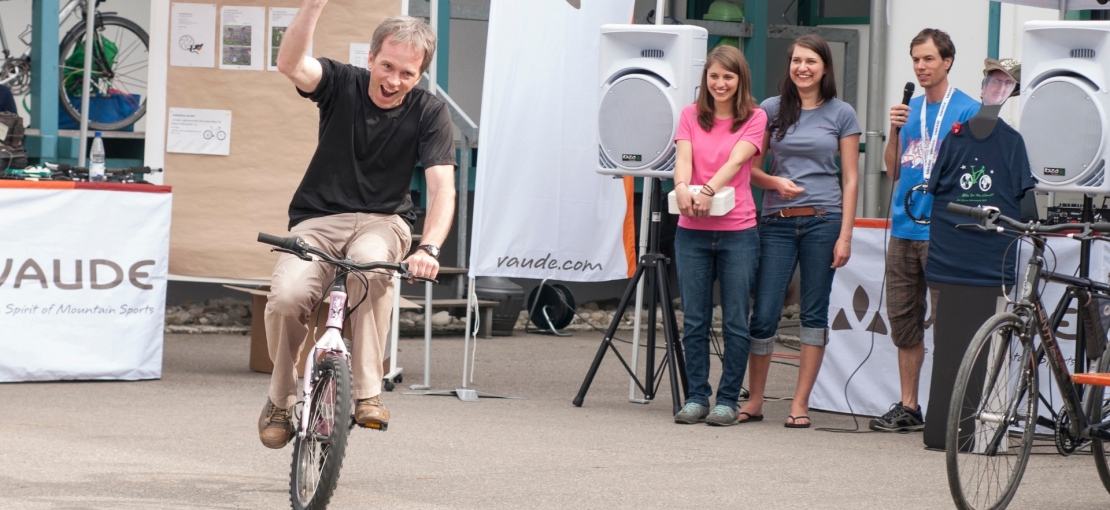
Satisfied employees are motivated
In the Top 10 of „Erfolgsfaktor Familie" (Success Factor Family)
In 2012, we participated in the German-wide business competition „Erfolgsfaktor Familie“ (Success Factor Family) of the Federal Ministry for Family Affairs in order to have our efforts towards good employee policies evaluated by an independent body. Every two to three years, this evaluation honors Germany’s most family friendly companies.
More than 350 companies participated in this competition, in which VAUDE made it to the final round of the ten best companies in the category of mid-sized enterprises (up to 1,000 employees).
Employee survey every two years
In order to obtain valid data on employee satisfaction, we carry out by a comprehensive employee survey that is evaluated by the independent institute (NPM Institute for Sustainable Human Resource Management) in a total of nine companies every two years (as a rule). In five of 23 questions VAUDE was rated as especially good and above average in the 2013 survey:
- knowledge of and identification with the company's objectives
- balancing work and family life - see „Family Company in the truest sense of the phrase“
- value placed on the importance of employees enjoying working for the company
- open and trusting climate - see „Culture of value and trust“
- employee motivation
These results confirm our belief that we are on the right track about the significance of purposeful employment. In areas where we did less well, we are taking the results of the employee survey very seriously and analyzing them accordingly. We have implemented an ongoing process to derive action measures from the evaluation in order to perform better in the future.
Compensation system is being revised
The statement that „our compensation system as a whole is very fair", was our weakest point in the employee survey. In order to counteract this, we started the project „Introduction of a payroll system" in 2013.
The goal of the project is to introduce a fairer and more performance- based compensation system to reward comparable services with comparable pay. The project was introduced in 2014 and will be analyzed and modified where necessary in 2015. The various measures derived therefrom shall be implemented in the coming years.
SWOT and interface analysis every two years
In alternating years, we carry out a SWOT analysis and an interface across various departments to illuminate those areas in which we still see improvement potential. The results are summarized on the departmental level and suitable measures are devised.
Fluctuation as a measure of employee satisfaction
Fluctuation is an important indicator for us, since a high turnover rate can be an expression employee dissatisfaction.
In 2014 we had a fluctuation rate of 29.01 percent (status 2013: 28.57 percent) including all apprentices, interns and temporary hires and excluding these a fluctuation rate of 8.64 percent (stand 2013: 10.66 percent). These numbers also include retirements and regular expiring contracts.
To get a better indication, we have created a more accurate calculation for the reporting period from which the following results were derived:
A central figure for us is non-commercial turnover which the BDA-formula (Formel der Bundesvereinigung der Deutschen Arbeitgeberverbände) calculates. In this calculation, the workforce is set in relation to exits which were initiated by employees. During the reporting period, this resulted in a figure of 4.5 percent (as of 2013: 3.8 percent) – results that are very good and which we want to maintain. To achieve this, we have begun to accurately detect and analyze employee initiated exits.
| GRI: | LA1 |
| GRI: | DMA Employment |
| GRI: | DMA Labor/ Management Relations |




